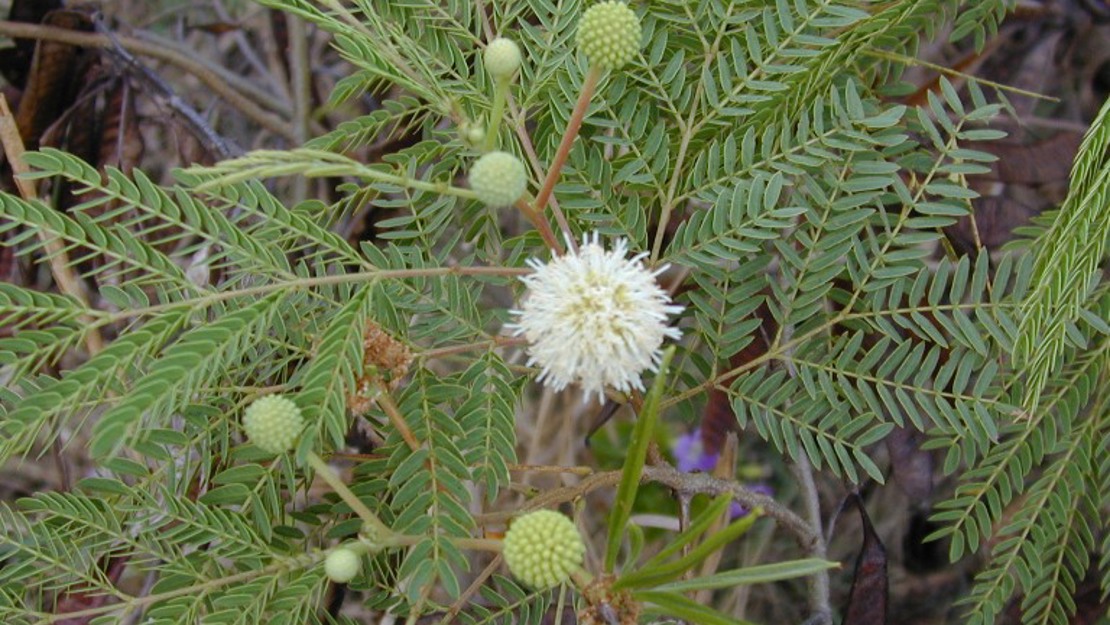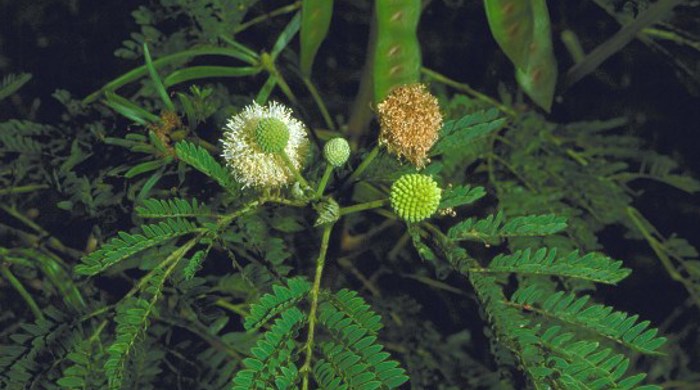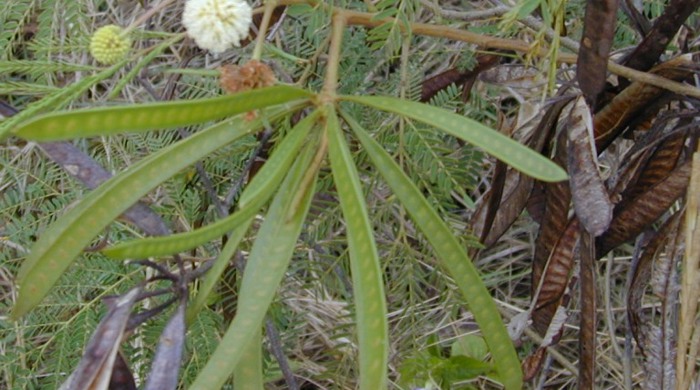Leucaena leucocephala
Wild tamarind
Also known as:
Lead tree
Family: Fabaceae
Origin: Mexico and Central America

Regional Pest Management Plan (RPMP) status
- Not a legally declared pest
General description
Evergreen shrub or small tree < 10 m tall. Stems are green and hairy, maturing to grey-brown and smooth with many raised pores. Leaves are alternate and bipinnate, with < 10 pairs of pinnae and < 22 pairs of elongated, pointy-tipped pinnules. Flowers are white and borne in dense globe-shaped clusters on spikes in summer. Seed pods are elongated, flattened, green ripening to brown, pointy-tipped and contain glossy, brown seeds.
What you need to know
Although wild tamarind is not a legally declared pest plant, it may still be invasive in some situations. Consider lower risk alternatives for your garden, such as native plants.
Habitats
Coastal areas, open areas, riparian margins, disturbed sites, wasteland, gardens, roadsides.
Dispersal
Seeds dispersed by water, wind, gravity, insects, rodents and livestock. Human-mediated dispersal through movement of contaminated soil.
Impact on environment
Can form dense thickets, outcompeting and displacing native vegetation. Nitrogen fixer. Can be toxic to livestock.
Control
Site Management
Follow up treated areas 3 times per year. Crown lift to allow understory plants to establish or to underplant prior to controlling large trees.
Recommended approaches
Physical control
Method: Dig out.
Plant parts requiring disposal: Seeds.
Disposal options: Trees can be chipped and used as mulch, preferably when not in seed.
Biocontrol
Biocontrol is currently not available for this species.
Community agrichemical control recommendations
No qualifications: Cut stump and paste freshly cut base of stems with double strength glyphosate gel
or ringbark and paste cut with double strength glyphosate gel.
Basic Growsafe certified: Foliar spray seedlings with 200ml glyphosate green per 10L of water
or ringbark and spray cut with 750ml glyphosate green per 1 L of water.
Certified Handler/Experienced agrichemical user: Drill and inject trees with 750ml glyphosate green and 10ml penetrant per 1L of water, if safe to do so. Drill 18mm holes (tangentially angled downwards) in a spiral up the trunk. For 50mm stems drill one hole. For 100mm stems drill two holes. For larger stems drill holes 150mm apart. Foliar spray seedlings with 200ml glyphosate green per 10L of water and 20ml penetrant.
Safety notes
Large trees must not be drilled or ringbarked that are closer than 1.5 times the height of the tree from paths, walkways and property.
Trees over 4 metres in height should be removed by a qualified arborist.
Caution: When using any herbicide or pesticide please read the label thoroughly to ensure that all instructions and safety requirements are followed.





